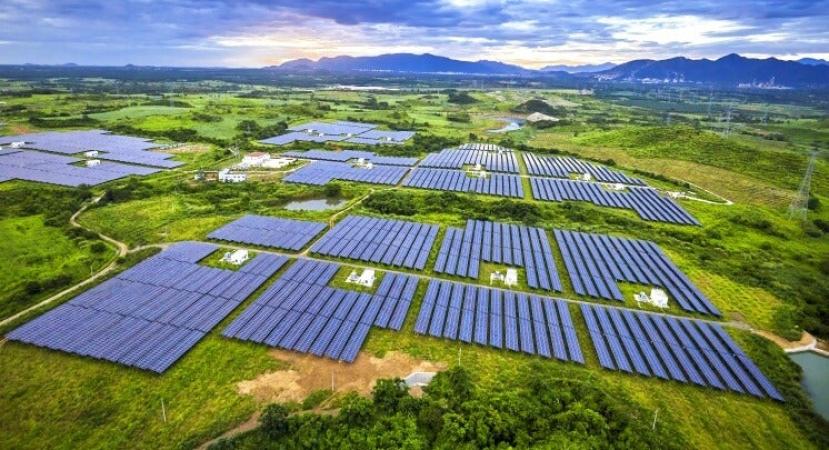Phillips 66, a major U.S. energy company, has taken a bold step toward sustainability by joining forces with NextEra Energy on an ambitious clean energy project. Beginning January 2025, a 30 megawatt solar facility will come online at the Phillips 66 refinery in Rodeo, California, demonstrating the power of clean partnerships in traditional sectors. With over 70,000 solar panels spanning 88 acres, this project is designed to supply as much as half of the refinery’s electricity demand and slash its carbon dioxide emissions by approximately 33,000 metric tons every year.
The site selection reflects a strategic choice: the solar farm sits directly adjacent to the Rodeo refinery, minimizing transmission losses and streamlining operations. This alignment ensures that clean energy displaces grid electricity almost immediately, cutting emissions where they count. The timing is significant — the solar plant begins operation just months after the refinery transitioned to producing renewable diesel, sustainable aviation fuel, and cleaner products at full capacity, signaling that Phillips 66 is serious about realigning its carbon footprint.
Backed by NextEra, the project leverages the utility’s deep experience in solar deployment. Their involvement guarantees thorough execution and reliable management. Construction and commissioning are slated for the first quarter of 2025, anticipating a gradual ramp-up in output. By converting sunlight into clean energy at scale, the project demonstrates both technical feasibility and cost-effectiveness in industrial settings.
For Phillips 66, producing 30.2 MW of solar electricity represents a strategic pivot. Refining, long reliant on grid power and fossil fuels, faces rising public scrutiny and regulatory pressure. This solar integration brings multiple benefits: reduced operational costs, improved environmental compliance, and positive corporate optics. Stakeholders, from investors to local communities, gain confidence from tangible steps toward decarbonization.
This initiative also carries broader implications for the clean energy sector. Until now, solar adoption in heavy industry — especially oil refining — has been limited by land and capital constraints. By showing that a solar facility can meaningfully offset energy use and emissions at an existing plant, Phillips 66 and NextEra are clearing a path for similar projects across America and abroad.
With an expected 60,000 megawatt-hours generated annually, the solar farm translates into reliable power — enough to light tens of thousands of homes each year. Though sizing differs from residential needs, this level of clean electricity underscores industrial potential. It showcases how infrastructure already in place can be reimagined for carbon reduction.
Critics may argue that a 30 MW solar farm within a refinery’s energy mix is a drop in the bucket compared to fossil fuel emissions—but symbolism matters. It's a demonstration that legacy energy industries can partner with renewables, piecing together a transitional roadmap that respects both industrial realities and environmental responsibilities.
Moreover, the carbon savings are real: 33,000 metric tons annually equals removing around 7,000 gasoline-powered cars from the road each year. That kind of reduction isn’t trivial—it adds up when scaled across multiple sites. With enough replication, these solar-refinery hybrids can gradually transform traditionally carbon-heavy processes.
As the facility begins operations, it will be closely watched by regulators, industry competitors, and environmental advocates. Its success—measured in performance, cost savings, and carbon reduction—could serve as a blueprint. In California, where both energy and environmental regulations run high, demonstrating compliance and cost-savings simultaneously amplifies the project's value.
Looking ahead, early backers hope for expansion. Could the next phase involve battery storage to smooth solar output during low-sun hours, or additional panels to push output beyond 30 MW? The groundwork is now laid, and the operational performance will likely influence scaling decisions.
This collaboration highlights a broader trend: utility companies and industrial operators worldwide are forging alliances to transition away from fossil dependency while maintaining operations. From Europe to Asia, solar integration into manufacturing, processing plants, and heavy industry is becoming a mainstream strategy, rather than a fringe experiment.
For local communities, the benefits go beyond cleaner energy. The project brings temporary construction jobs, potential training in solar maintenance, and local visibility of renewable tech. Seeing a refinery powered partly by solar light begin to dismantle stereotypes—and offers hope for jobs that bridge old and new energy eras.
As the solar installation begins feeding energy into the Rodeo refinery this winter, anticipation is high. Operational reports for the first 12 months will show how much coal and gas power were actually displaced, whether emissions targets were met, and what challenges emerged. Those insights will inform similar projects across the U.S. and globally.
In short, Phillips 66 and NextEra’s 30 MW solar farm in California is more than a local environmental measure—it's a test case in transforming traditional energy facilities. If it succeeds, it will offer a working template: legacy industries embracing renewables without stopping work. Amid climate pressure, economic uncertainty, and rising renewable competitiveness, that model may define the next chapter of energy transition.

